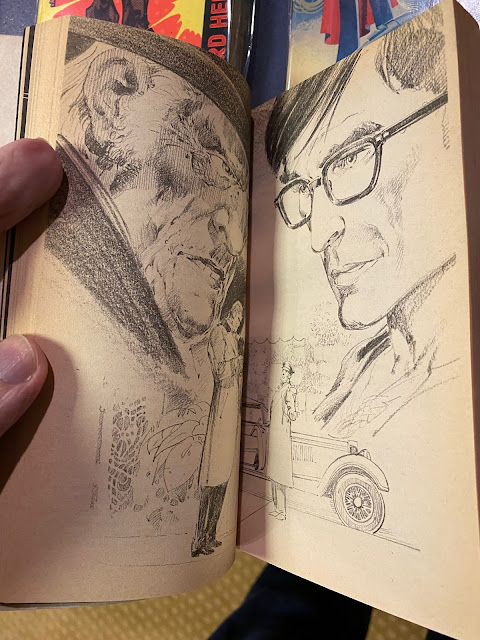 |
| Weird Heroes #1-#4 |
As the 1970s dawned, there was also an interest to rekindle the higher quality end of the pulp market, either through reprints or through attempts to develop a new kind of pulp which took advantage of a climate of looser mores, the acceptance of SF as a mainstream genre in popular culture, and the availability of a new generation of comic book artists for spot illustrations. The new generation of writers had been pulp readers in their adolescence, and so were drawn to the challenge of reinventing the genre.
The period of this “new pulp” renaissance lasted for just over a decade, starting with Byron Preiss’s Weird Heroes in 1975, and probably ending with the demise of New Black Mask quarterly in 1988.
Weird Heroes was an experiment, in the words of editor Byron Preiss, to create a New American Pulp. Back in 1976 I managed to procure two copies from DTwAGE. Recently I have managed to collect the other issues. There are 8 issues in total, featuring a mix of short stories and full-length novels. The authors embrace a wide spectrum of talent, from old hands like Philip Jose Farmer to young turks like Harlan Ellison.
I bought my original issues at a time when I was avidly following the work of Harlan Ellison, had a new interest in the old pulps, had a burgeoning interest in movies and SF and Crime TV shows, and so Byron Preiss’ book, with illoes by hot comic artists, hit all the right buttons.
The pages below highlight Neal Adams’ artwork contribution the New York Review of Bird, a story featuring a thinly-disguised Harlan Ellison in his alter-ego of Cordwainer Bird, meeting an aged version of the Shadow.
Weird Heroes #5-#8
The experiment lasted only 8 books, but they are worth tracking down to read something that really tried to stretch the envelope of graphic storytelling in the mid 1970s.



I don't think I've ever read any of Harlan Ellison's books, but I'm not really into Science Fiction per se. In fact, the only one I've read that might qualify is H.G. Well's The Time Machine, though some people regard Frankenstein as belonging in that category. I've also read Adrift In The Stratosphere by forget his name, but it was really a book for kids and was a load of ol' pants.
ReplyDeleteActually my favourite Harlan Ellison books are his TV criticism collections The Glass Teat and The Other Glass Teat. His short story works are well known. He worked across multiple genres, but somehow got tagged as SF author due to writing one Star Trek episode and a couple of Outer Limits episodes. I was more into SF in my teens - have not read anything in the genre since my early 20s. Tastes change over the years.
DeleteI remember seeing the first 2 issues of these books in a local Glasgow bookshops years ago, but (regret) not picking them up. I had no idea there were 8 books I thought it stopped at number 2 . Great to see the covers ,some crackers.
ReplyDeleteLike Kid I can't recall reading any Ellison books ( possibly a short story) only his work when adapted or when he specifically wrote for comics .
I would have replied sooner, but the comments box was missing Ian
That's weird that the comments box disappeared. Do you use Chrome? I generally use Chrome for viewing and commenting on blogspot sites....Safari doesn't always let me comment, even if I'm logged in.
DeleteThe Weird Heroes paperbacks are worth getting, if you see them. Like a lot of mass market paperbacks from that period, the paper frequently yellows, of course.